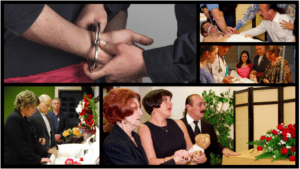Live performances across the United States, have taken a huge hit in the past two years. While government grants aided some little theater groups, recovery has largely taken a long intermission.
The little theater movement of the early 20th Century was a way to break away from constraints to accommodate freedom of expression previously unknown. Embraced by social reformer Jane Addams in 1889, the premise was that amateur theater had a place in influencing a community.
Perhaps the pioneer of this movement, Jane Addams and the story of the conversion of her residence Hull House in Chicago, offers the script for little theater’s rebound. Along with a migration toward more freedom in expression and experimentation in the arts and theater, Addams set out to serve the needs of her Chicago neighbors as well.
To that end, Hull House went beyond theater and established a cultural center. It addressed the immigrant Chicago neighborhood’s basic needs for public education, a public kitchen and more along with a place to congregate and receive support.
Our era could use an updated vision of just this type of integration and innovation to serve the public. The theater could have a significant role in meeting community needs, as will further be explained.
We are decades into the epidemic of substance abuse, setting a new record of over 100,000 overdose deaths in 2021. Consider, however, that families in the general public are the most under-served population when it comes to substance abuse prevention.
Resources are largely reserved for at-risk populations already struggling with substance abuse experimentation or addiction. Services are necessary for the at-risk population, but over the years what has evolved is total neglect of prevention for the general public. Yet, it can be life-changing to offer the general public the drug prevention information families need to navigate today’s environment.
A program called Reality Tour® was designed to provide prevention education to families in the general public and a sustainable model for replication is available.
Reality Tour® focuses on three areas to provide a memorable prevention message to parents (or caregiver) and their child ages 10-18.
The central components of this 2-hr program include:
- The consequences – Portrayed in dramatic scenes
- The coping skills – A guided interactive session
- 1st Person Account – Interview/ Q & A with youth in recovery.
Theater groups already possess the foundation to establish Reality Tour:
- Staging to accommodate audience proximity in the actual scene
- Actors (Youth & Adult roles)
- Public Speakers
- Networking in the community

Exploration of the concept as well as organizing a stakeholder meeting is made easy by requesting a Planner from the Reality Tour’s homepage. The nonprofit CANDLE, Inc., which oversees the program, offers a gap grant application for organizations that host a stakeholder meeting yet fall short of the $3500 actual cost of the program model.
While this program can be an attractive vehicle for community theater, it’s essential to pair that goal with a strong desire to prevent youth substance abuse.
One PA community is celebrating 15 years of Reality Tour. Some volunteers have been with the program since the very beginning.
CANDLE, Inc. is also willing to share how ongoing Reality Tour® presentations, can serve as additional funding for a theater group. To inquire complete a brief questionnaire
